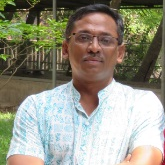Advances on Land Cover/Land Use Ontologies for Innovative Production/Utilization of Land Information
A special issue of Land (ISSN 2073-445X). This special issue belongs to the section "Land – Observation and Monitoring".
Deadline for manuscript submissions: 31 December 2025 | Viewed by 28499
Special Issue Editors
Interests: ISO standards for land cover and land use; ontologies; remote sensing; GIS; agriculture; land cover classification; land use classification; natural resource survey; land cover mapping; ecological/environmental monitoring
Interests: ISO standards for land cover and land use; forestry; environment; natural resources management and conservation; climate change mitigation and adaptation; sustainable land management; conservation agriculture; safe access to fuel and energy; landscape restoration; biodiversity conservation; data management and analysis; information system; remote sensing; GIS; classification system; field inventory; planning; coordination of field interventions; research; education and knowledge sharing
Interests: remote sensing; coastal management; geomorphology; environmental management; climate change adaptation; sustainable development; natural resource management; geographic information system; participatory rural appraisal; ecosystem services valuation
Interests: natural resource management; agricultural monit. & agric. statistics; geo-spatial data and agric. area frames; spatial data infrastructures; geo-spatial data standards; data governance; project formulation; project management; capacity development; food security; climate change; agroecology; AEZ/NAEZ; in emerging and developing country context
Interests: fate of trace metals and persistent organics in soil and water systems; impact of climate change on environment and ecology; impact of interventions on environmental quality and ecology; flow and sedimentation processes in coastal environment
2. Department of Space Science, University of the Punjab, Lahore 54590, Pakistan
Interests: geospatial economic alternatives; satellite based indices; land use planning and management; climate change; water resources assessment; GIS; satellite remote sensing; multi criteria analysis; land cover dynamics; municipal waste hazard assessment; atmospheric pollution; rainwater harvesting; bio/thermal indicators; urban heat island effect
Special Issue Information
Dear Colleagues,
The “Land” is where human beings stand, act and grow. The term land encompasses all physical elements bestowed by nature; therefore, it supports all aspects of our life.
Land cover and land use are the fundamental information required in the monitoring and planning of natural resources, agriculture production, forest management, emergency responses, green cities development, climate change, and achieving and monitoring of the Sustainable Development Goals (SDGs), in addition to many other initiatives and goals at the local to global levels.
The advancement in remote sensing (RS), geographical information system (GIS) and machine learning techniques provides more and more remarkable and crucial information in understanding the complex dynamics of the environment. Despite those innovations, however, there is a lot of effort still to be made in the “formalization of the meaning” of that information, how they are conceptualized and shared. The compatibility of land products become increasingly crucial as the amount of available information rises, but inconsistencies still exist affecting their comparability and efficient functional use.
During the past decade, new innovative methods and tools to characterize and functionally define/classify land cover (and land use) information have emerged. Those efforts can potentially redefine many aspects of how the user community generates and utilizes land information. Therefore, reviewing and understanding the potentialities of those advances, as well as their impacts in the generation/utilization of “Land” information, is critical.
The aim of this Special Issue is to encourage the science and research community to provide their inputs through innovative ideas and proposals in the development of consistent, sustainable and interoperable land cover and land use datasets using integrated approaches and implementing existing standards to support various ongoing local to global land cover and land use initiatives. This subject is highly related to the scope of the journal in the context of ;and system science and social–ecological system research; land/land-use/land-cover change; land management including agriculture, forestry, the built environment and others; land–climate interactions, including climate–biosphere–biodiversity interactions; assessment and evaluation frameworks, indicators, indices, methods, tools and approaches (ecosystem services, multifunctionality and sustainability); and emerging technologies of data processing (deep learning/machine-based learning).
In this Special Issue, we invite papers regarding, but not limited to, the following topics:
- innovative ways to define/characterize land cover/land use ontologies;
- multi-disciplinary research that investigates the intrinsic relationship between land cover and land use;
- use of new standards and new methodologies for the functional integration of earth observation data, field data, remote sensing and other ancillary information;
- automatic comparison and similarity assessment of existing different land cover ontologies using ISO standard (ISO 19144-2).LCML (Land Cover Meta Language) to assure semantic interoperability and harmonization of data sets from national to global level;
- role, importance and use cases of land information for Sustainable Development Goals, climate action (SDG 13) and life on land (SDG 15).
Dr. Antonio Di Gregorio
Dr. Matieu Henry
Guest Editors
Chris T. Hill
Prof. John Latham
Prof. Dr. Mohammed Abed Hossain
Dr. Khalid Mahmood
Dr. Foster Mensah
Co-Guest Editors
Manuscript Submission Information
Manuscripts should be submitted online at www.mdpi.com by registering and logging in to this website. Once you are registered, click here to go to the submission form. Manuscripts can be submitted until the deadline. All submissions that pass pre-check are peer-reviewed. Accepted papers will be published continuously in the journal (as soon as accepted) and will be listed together on the special issue website. Research articles, review articles as well as short communications are invited. For planned papers, a title and short abstract (about 250 words) can be sent to the Editorial Office for assessment.
Submitted manuscripts should not have been published previously, nor be under consideration for publication elsewhere (except conference proceedings papers). All manuscripts are thoroughly refereed through a single-blind peer-review process. A guide for authors and other relevant information for submission of manuscripts is available on the Instructions for Authors page. Land is an international peer-reviewed open access monthly journal published by MDPI.
Please visit the Instructions for Authors page before submitting a manuscript. The Article Processing Charge (APC) for publication in this open access journal is 2600 CHF (Swiss Francs). Submitted papers should be well formatted and use good English. Authors may use MDPI's English editing service prior to publication or during author revisions.
Keywords
- land cover
- land use
- interoperability
- standardization
- geospatial technology
- semantic ontology
- harmonization
- classification
- earth observation
- remote sensing
- sustainable development
Benefits of Publishing in a Special Issue
- Ease of navigation: Grouping papers by topic helps scholars navigate broad scope journals more efficiently.
- Greater discoverability: Special Issues support the reach and impact of scientific research. Articles in Special Issues are more discoverable and cited more frequently.
- Expansion of research network: Special Issues facilitate connections among authors, fostering scientific collaborations.
- External promotion: Articles in Special Issues are often promoted through the journal's social media, increasing their visibility.
- Reprint: MDPI Books provides the opportunity to republish successful Special Issues in book format, both online and in print.
Further information on MDPI's Special Issue policies can be found here.











